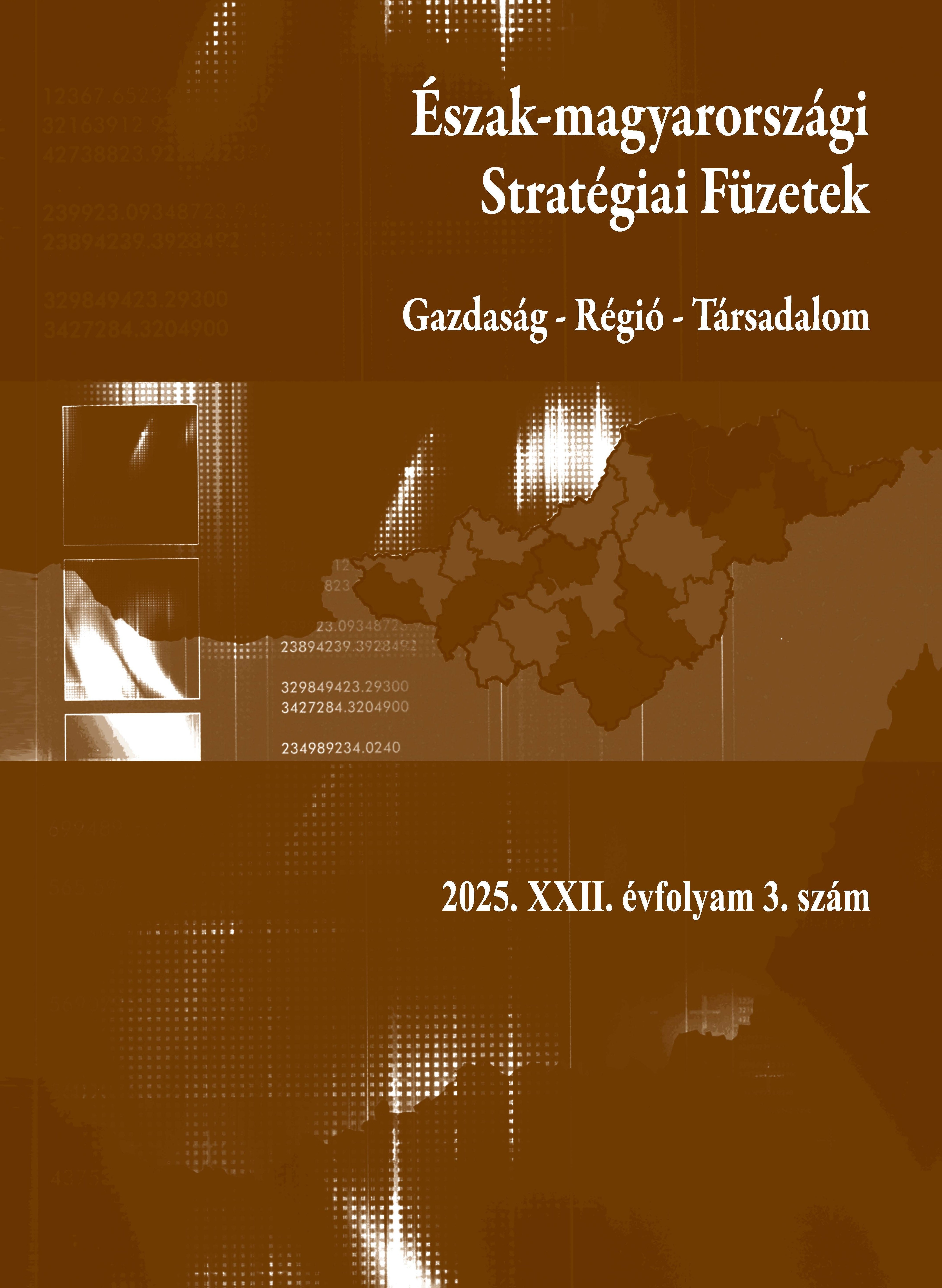Regional differences in quality of life in Hungary
DOI:
https://doi.org/10.32976/stratfuz.2025.23Keywords:
territorial inequality, local human development indexAbstract
This study aims to highlight, through the application of the Local Human Development Index (LHDI), those NUTS 3 level areas in Hungary that perform exceptionally well based on the quality-of-life analysis. The LHDI methodology retained the three main components of the traditional HDI (education, health, income), however, due to data availability limitations, "different" indicators were used. Regarding the results of the LHDI analysis, it can be stated that more developed regions performed outstandingly during the study also in the quality of life, and the negative impact of the 2008-2009 crisis slightly affected the values.
References
BARRO, R. J., & LEE, J.-W. (2010). A new dataset for educational attainment in the world, 1950-2010. National Bureau of Economic Research (NBER) Working Paper, 15902. https://doi.org/10.3386/w15902
BENEDEK, J., & KURKÓ, I. (2011). Evolution and characteristics of territorial economic disparities in Romania. Theory, Methodology and Practice, 7(1), 5–15.
DESAI, M. (1995). Greening of the HDI? In A. McGillivray (Ed.), Accounting for change (pp. 21-36). The New Economics Foundation.
FARKAS, M. B. (2012). A korrigált humán fejlettségi mutató kistérségek közötti differenciáltsága Magyarországon. Területi Statisztika, 52(3), 230-249.
GARAMI, E. (2009). A humán erőforrás területi különbségei: Az emberi fejlődés indexének hazai alkalmazhatósága. Területi Statisztika, 52(3), 280-298.
HERMANSONS, Z. (2015). Measuring human development at the local level: A case study of Latvia. Central European University.
HUSZ, I. (2001). Az emberi fejlődés indexe. Szociológiai Szemle, 11(2), 72-83.
IVANOV, A., & PELEAH, M. (2011). Disaggregation of Human Development Index: Opportunities and challenges for local level policy-making. UNDP Regional Centre, Bratislava.
JÓZAN, P. (2008). A módosított humán fejlettségi mutató (MHFM) és alkalmazhatósága az életminőség mérésében. Statisztikai Szemle, 86(10-11), 949-969.
KÁPOSZTA, J. (2014). Területi különbségek kialakulásának főbb összefüggései. Gazdálkodás: Scientific Journal on Agricultural Economics, 58(4), 399-412.
KSH (2020). Környezeti helyzetkép. Központi Statisztikai Hivatal, pp. 99.
LIPTÁK, K. (2017). Települési humán potenciál vizsgálata Magyarországon. Észak-magyarországi Stratégiai Füzetek, 14(2), 55-64.
NEMES NAGY, J. (2005). Komplex mutatók. In J. Nemes Nagy (Szerk.), Regionális elemzési módszerek (Regionális Tudományi Tanulmányok 11. ELTE Regionális Földrajzi Tanszék – MTA ELTE Regionális Tudományi Kutatócsoport, Budapest
NEUMAYER, E. (2001). The human development index and sustainability: A constructive proposal. Ecological Economics, 39(1), 101-114. https://doi.org/10.1016/S0921-8009(01)00201-4
SABERMAHANI, A., BAROUNI, M., SEYEDIN, H., & ARYANKHESAL, A. (2013). Provincial Human Development Index, a guide for efficiency level analysis: The case of Iran. Iranian Journal of Public Health, 42(2), 149-157.
SAGAR, A. D., & NAJAM, A. (1998). The human development index: A critical review. Ecological Economics, 25, 249-264. https://doi.org/10.1016/S0921-8009(97)00168-7
SILVA, R., & FERREIRA-LOPES, A. (2012). A regional human development index for Portugal. CEFAGE-UE Working Paper, 05. Évora, Portugal.
SZENDI, D. (2015). A lokális humán fejlettségi index eloszlása és területi autokorrelációja Németország és Magyarország esetében. Területi Statisztika, 55(6), 556-591.
UNITED NATIONS DEVELOPMENT PROGRAMME (UNDP). (1990). Human Development Report. UNDP, New York.
UNITED NATIONS DEVELOPMENT PROGRAMME (UNDP). (1995). Human Development Report. Oxford University Press, New York.
UNITED NATIONS DEVELOPMENT PROGRAMME (UNDP). (2011). National Human Development Report for the Russian Federation. UNDP, Moscow.
UNITED NATIONS DEVELOPMENT PROGRAMME (UNDP). (2013a). National Human Development Report Poland 2012: Local and regional development. UNDP Project Office in Poland, Warsaw.
UNITED NATIONS DEVELOPMENT PROGRAMME (UNDP). (2013b). Atlas of Human Development to the Municipalities. UNDP Brazil.
UNITED NATIONS (2014). Human Development Report. United Nations, New York.
Downloads
Published
How to Cite
Issue
Section
License

This work is licensed under a Creative Commons Attribution-NonCommercial-NoDerivatives 4.0 International License.







